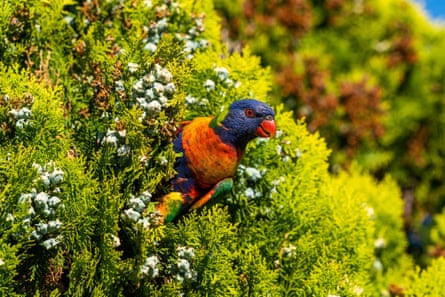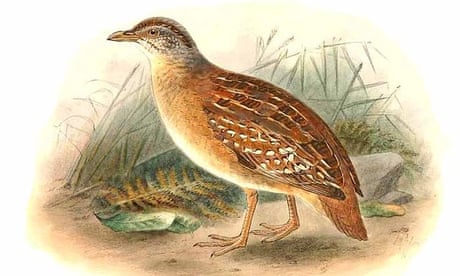Extract from The Guardian
For most, it’s idle curiosity or an appreciation of nature that draws their attention.
But for some of us, birdwatching is serious business.
To onlookers, birdwatching appears to be a very niche hobby. Spot a bird, then tick it off your list – it’s a narrow formula. In practice, however, birdwatching requires a broadening of perception.
To fully appreciate birds and their behaviour, you need to be paying attention to other aspects of their environment.
The livelihoods of birds are shaped by resources, such as food, water and shelter. These resources are also influenced by other animals, plants and fungi that share the same habitat. The ecosystem, in turn, is shaped by global patterns of weather, temperature, aspects of geology and human influence.
The focus is initially on birds because they act as diplomats for the rest of the environment – they are highly mobile (and therefore widespread), they are noisy (be it singing or screeching), and they are often beautiful.
Birds are the heralds which provoke our curiosity – and once curious, it becomes difficult for us to ignore the animals, plants, watercourses and weather patterns that underpin the survival of these creatures. Birdwatching truly is the gateway drug to such environmental awareness, and that’s why I’m so passionate about it.
Birdwatching teaches us to value birds, which compels us to value their host environment. For example, the singing of superb lyrebirds reflect the soundscapes of their habitat. These birds also improve biodiversity by turning over literally tonnes of leaf-litter every year while they look for invertebrates. These birds are ecosystem engineers, subject to and, in turn, contributing to the push-pull of their habitat. This push-pull interaction is a phenomenon we can appreciate in many bird species, including seed-dispersing mistletoebirds and cassowaries, insect-moderating pardalotes and pollinating honeyeaters.
When we look at a bird, we are actually looking at the sum of numerous ecological processes. One bird can embody the complexity of an entire ecosystem. That’s where the broadening of perception comes in – it’s deeper than ticking a species off a list. It’s seeing what processes have allowed that bird to be here, now, surviving, against many odds.
A large part of the power of birdwatching lies in being able to name species. Simply, if we can identify species and where they live, we can effectively advocate for their protection. In Landmarks, Robert Macfarlane states “once [natural phenomena and entities] go unnamed, they go to some degree unseen. Language deficit leads to attention deficit.” Beyond the few iconic species known to most people – magpies, kookaburras and cockatoos – species names have largely slipped from everyday use. In a world where a wealth of information waits online, species’ names are keys which empower us to teach ourselves about things we’ve seen outside. Engaging with your environment – be it through birdwatching, or by other means – can reverse this cultural slippage of language. If you recognise a species, you can describe and share that experience with your loved ones, neighbours, community, and build a collective knowledge of the animals that are sharing the environment.
If it’s proposed that a parkland, waterway or nature strip be swallowed up by urban swell, we need local individuals who know which road verge hosts rare orchids, which tree bears nesting hollows, where in the thicket a satin bowerbird is constructing a bower. In this way, we stop observing the natural world from “the outside” but step into the landscape as advocates and participants.

My final and most selfish reason we should all be birdwatchers: noticing birds makes you feel good. On a day where I’m feeling grumpy, watching a succession of white-browed scrubwrens frolic in the bird bath helps to turn things around. Pausing to appreciate beauty helps us shift our outlook. A vivid king parrot visiting your verandah, the hovering flight of a spinebill at the grevillea you planted, or the high, silhouetted sight of a wedge-tailed eagle above the suburbs is a pretty special moment to revel in, however fleeting. It’s important to actively appreciate these simple pleasures, not to let them pass unnoticed. These are the moments emphasised by birdwatching – moments that provide perspective, reminding us that we are a small part of a big ecological process.
For many birdwatchers who have adopted the hobby in adulthood, there is a strong delineation of life before being a birdwatcher, and life afterwards. I think this is because birdwatching changes the way you look at the world. Intentionally placing your attention outward to your surrounds becomes habitual. That’s the joy of this hobby. It is paradoxically fixated on detail yet is also expansive. It appreciates birds as the representatives of ecosystems and global processes. It empowers individuals to care for their immediate surrounds, and it also helps us engage with community about the collective spaces we all use. It helps us name and make tangible the species we observe – and those we no longer see. And finally, birdwatching allows us to gain perspective in the face of challenge.
It’s a hobby that dwells on the joy of being alive, now, and sharing this window in time with such an amazing diversity of fellow species.

No comments:
Post a Comment